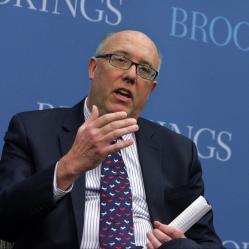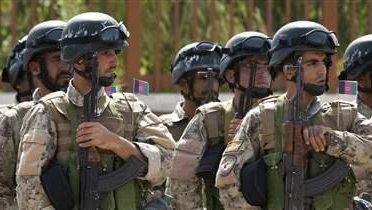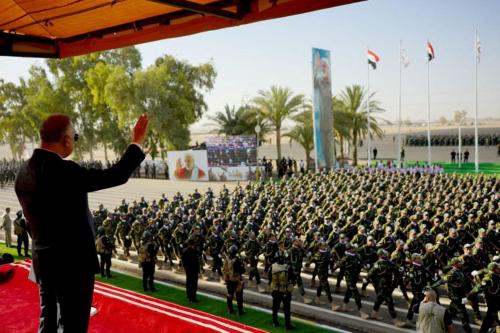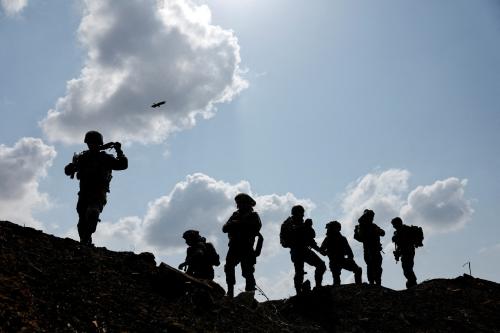Editor’s Note: The following is a Campaign 2012 policy brief by Bruce Riedel and Michael O’Hanlon proposing ideas for the next president on America’s foreign policy toward Afghanistan and Pakistan. Vanda Felbab-Brown prepared a response arguing that corruption and political patronage in the Afghan government must be overcome to help reconnect the country’s citizens with their government. Elizabeth Ferris also prepared a response arguing that a vital step in establishing security and stability in Afghanistan and Pakistan is meeting the long-term humanitarian needs of their people.
Four years ago, Barack Obama ran for president arguing that Afghanistan and Pakistan were the most crucial national security issues for the United States and that he would prioritize his attention and the nation’s resources in their direction if elected. His reasons began with the fact that Afghanistan was the preferred sanctuary for al Qaeda, where the 9/11 attacks were planned. In addition, Afghanistan offered huge swaths of land where al Qaeda and other extremist groups—mainly, Pakistan’s own Taliban, which seeks to destabilize that country, and Lashkar-e-Taiba, which seeks to attack India—would likely take refuge if the Afghan Taliban again seized power in much or all of that country. And Pakistan, soon to be the most populous country in the Islamic world and the fifth largest in the world, also has the fastest growing nuclear arsenal in the world and is on track to be the world’s third largest nuclear weapons state.
The Obama administration has had major successes. The good news is that Osama bin Laden is dead and much of the broader al Qaeda leadership has similarly met its demise. Since preventing attacks by transnational terrorists against the United States and its allies was the core objective of military operations in Afghanistan, this is no mean feat. Also, Pakistan has arrested the progress of its own Taliban in threatening its internal stability. No further terrorist incidents like that of Mumbai in 2008 have brought India and Pakistan to the brink of what could be nuclear war. In addition, the momentum of the Taliban within Afghanistan has been stanched. By 2011, the NATO-led International Security Assistance Force (ISAF) was documenting fewer enemy-initiated attacks than had been witnessed in 2010 (though still more than were observed in 2009).
But, there is ample bad news as well. The U.S.-Pakistan relationship has not been worse since 9/11. President Obama’s troop buildups in Afghanistan, announced in two tranches in February-March and December 2009, have not produced dramatic battlefield changes like that witnessed in Iraq in 2007-2008 and have failed to convince key regional players that the United States and its allies will get the job done before leaving. And, the leaving has begun; by the end of this summer, the December 2009 tranche of additional American forces will have come home. Many sense the next tranche will follow in 2013, perhaps before the job is done.
America needs a new policy for dealing with Pakistan and a new political strategy, though not a new military strategy, for dealing with Afghanistan. The next president should:
- Stop relying on the Pakistani Army to protect American interests, but rather move toward containment of that army’s aggressive instincts, while helping those who want a progressive Pakistan and keeping up the fight against terrorism
- Show patience toward a major drawdown of U.S. forces in Afghanistan
- Try to build a constitutional, institution-based government in Afghanistan—however imperfect and
- Insist on the orderly exit from office of President Hamid Karzai in 2014, as required by the Afghan constitution.
The Obama Record
The killing of bin Laden highlights, in a single incident, both the successes of the current administration and the magnitude of the challenge still facing the president and the military. On a clear night in early May 2011, American navy SEAL commandos found and killed bin Laden in his hideout in the Pakistani city of Abbottabad. After searching for high-value target number one since 1998, the Central Intelligence Agency had finally found the most wanted man in human history—right in the heart of Pakistan’s main military redoubts. Abbottabad lies barely 30 miles north of the country’s capital in Islamabad and less than 40 miles from the nearby military general headquarters in Rawalpindi, and it hosts the country’s premier military academy.
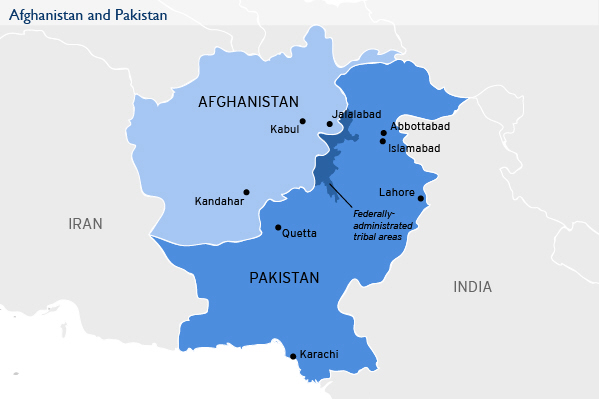
The most important mystery, of course, is what the Pakistani army and Inter-Services Intelligence (ISI) knew about bin Laden’s hideout. From the day the CIA began to focus on Abbottabad, President Obama decided he could not trust the Pakistanis with information about the hideout. No Pakistani official was given any advance warning that the United States suspected bin Laden was hiding in the Abbottabad complex or intended to send commandos to find and either capture or kill him. During months of surveillance of the compound and preparation for the SEAL operation, Pakistan was kept completely in the dark by Obama and his national security team.
It was an extraordinary decision. Since 2001, Pakistani leaders—from General, later President, Pervez Musharraf to today’s President Asif Ali Zardari and chief of army staff General Ashfaq Kayani, the real power in the country—had promised again and again to help America fight al Qaeda. Now, at the moment of truth, the American president correctly judged that he could not trust them with the vital information on the location of al Qaeda’s top leader. Obama’s decision spoke volumes about America’s real attitude toward its Pakistani partner. During his presidency, Islamabad has consistently either condoned or, at least to some extent, perhaps even aided elements of the Afghan insurgency (notably the Quetta Shura Taliban and the Haqqani network) that find sanctuary on its soil. We now also know that the November 2008 Mumbai attack in India was planned and partly funded by the ISI during the tenures of Kayani and Nadeem Taj as directors general of the intelligence service. The American who helped plan the attack, David Headley, has testified to that in trials in Chicago.
The raid in Abbottabad dealt a heavy blow to U.S. relations with Pakistan—and more recently, the November 26 American airstrikes that killed at least 24 Pakistani soldiers near the Afghan-Pakistan border have made things even worse. It was clear to all that Obama and his team did not trust Kayani and the Pakistanis. It was also clear that the Pakistani army could not be relied on to deal with terror. For Americans, this means we will need a base nearby to strike serious targets that threaten our interests. Afghanistan is that base. The helicopters that carried our troops to bin Laden’s lair flew from Afghanistan. If they had instead flown from aircraft carriers in the Arabian Sea, the mission would have failed. It is just too far away.
In Afghanistan, the Taliban murdered the Kabul government’s chief peace negotiator, former President Burhanuddin Rabbani, in September 2011. That assassination probably buried any hope for a peace agreement in the near future, although the Obama administration remains committed to trying to find a political process to talk with the Taliban.
India is critical in all of this. Obama has wisely invested time and capital in building ties to New Delhi, visiting there in November 2010. A strategic Indo-American dialogue on Pakistan is essential and could focus the Pakistani army’s mind more fully on the counterproductive results of its policies, inducing it to reconsider its strategic plans. Fortunately, India and Pakistan are trying to improve trade and transportation links severed in 1947. But the bad diplomatic news is that there is no progress in the Afghan-Pakistani relationship, and if anything just as much deterioration as in the U.S.-Pakistan relationship. On top of that, the Afghan government remains largely dysfunctional, with extensive pockets of corruption and limited reach within its own territory. Components of the Afghan insurgency, and their dominance in parts of the country, loom as great a threat as ever.
By contrast, despite the lack of a dramatic impact on the ground of the president’s troop buildup, the president’s Afghanistan strategy is making some progress. The Afghan security forces are now more than 300,000 strong, well along the way to the goal of some 350,000, and perhaps half the units are performing acceptably in the field, even if they still typically need NATO help in key enabling areas such as airpower, logistics, route clearance technology and intelligence. In some ways, the violence in Afghanistan has receded, with NATO reporting 25 percent fewer enemy-initiated attacks nationwide in the latter part of 2011, compared with the same period in 2010.
Unfortunately, the United Nations reports the opposite finding, that on balance 2011 was more violent than 2010. The central difference in the two approaches would seem to be that the UN counts not just war-related attacks but also violent crime unrelated to the war per se, while NATO/ISAF is more specific in its definitions of violence. So, ISAF is reporting a weaker insurgency, whereas the UN senses that overall personal security from all causes is somewhat worse countrywide. It is quite possible both conclusions are true. Such is the mixed state of things in the Afghanistan-Pakistan region today.
In short, despite major successes in the current administration, the American engagement with both Afghanistan and Pakistan remains troubled.
The Republican Critique
While Representative Ron Paul and, before his withdrawal from the race, former Governor Jon Huntsman have favored a rapid disengagement from Afghanistan, Obama’s rather muscular approach on Afghanistan and the death of bin Laden discouraged most Republicans, for some time, from adopting their standard approach of challenging a Democratic president as weak on national security. But, this year, former Governor Mitt Romney has sharply critiqued the Obama approach. Romney says the President’s self-imposed deadlines on troop withdrawals have undermined the overall effort and encouraged Taliban and Pakistani hardliners. He also says the administration badly mishandled the Afghans’ 2009 presidential election by tolerating massive fraud by Karzai supporters that weakened the legitimacy of the Kabul government. Romney opposes any negotiations with the Taliban as appeasement. Meanwhile, former Speaker Newt Gingrich has implied Obama mishandled Pakistan and should do more to investigate ISI complicity in hiding bin Laden, which he contends is a virtual certainty. Before leaving the race, Governor Rick Perry proposed a much more active tilt toward India, in order to pressure Pakistan.
The Job for the Next President
Reshaping Our Approach
Whether Barack Obama is reelected or replaced by a Republican challenger, America needs a new policy for dealing with Pakistan—a policy recognizing that the two countries’ strategic interests are more in conflict than in harmony, and will remain so for as long as Pakistan’s army controls its strategic policy making. As then-chairman of the Joint Chiefs of Staff Admiral Mike Mullen told a Senate committee in September, Pakistan provides critical sanctuary and support to the very Afghan insurgency that we are trying to suppress. Taliban leaders meet under Pakistani protection even as we try to capture or kill them. Under the next administration, the United States must contain the Pakistani Army’s ambitions until real civilian rule returns and Pakistanis set a new direction for their foreign policy.
In 2009, one of us (Riedel) led a policy review for President Obama on Pakistan and Afghanistan. At the time, al Qaeda was operating with virtual impunity in Pakistan, and its ally Lashkar-e-Taiba had just attacked the Indian city of Mumbai and killed at least 163 people, including six Americans, with help from Pakistani intelligence. Under no illusions Mr. Obama tried to improve relations with Pakistan by increasing aid and dialogue; he also expanded drone operations to fight terrorist groups that Pakistan would not fight on its own.
It was right to try engagement, but now the approach needs reshaping. Into the next presidential term, the United States will have to persevere in Afghanistan in the face of opposition by Pakistan. And, the president will need a longer-term view of how to improve trends within Pakistan itself.
The generals who run Pakistan have not abandoned their obsession with challenging India. They tolerate terrorists at home, seek a Taliban victory in Afghanistan and are building the world’s fastest-growing nuclear arsenal. They have sidelined and intimidated civilian leaders elected in 2008. They appear to think Pakistan is invulnerable, because it controls NATO’s supply line from Karachi to Kabul and possesses nuclear weapons.
The generals also think time is on their side—that NATO is doomed to give up in Afghanistan, leaving them free to act as they wish there. So, they have concluded that the sooner America leaves, the better it will be for Pakistan. They want Americans and Europeans to believe the war is hopeless, so they encourage the Taliban and other militant groups to speed the withdrawal with spectacular attacks, like the September 13, 2011, raid on the United States embassy in Kabul, which killed 16 Afghan police officers and civilians.
Pakistan: Nuanced Containment
The next president will need to move closer to a policy of containing Pakistani aggression, which would mean a more hostile relationship. But, it should be a focused hostility, aimed not at hurting Pakistan’s people but rather at holding its army and intelligence branches accountable. When we learn that an officer from Pakistan’s Inter-Services Intelligence, or ISI, is aiding terrorism, whether in Afghanistan or India, we should put him on wanted lists, sanction him at the UN and, if he is dangerous enough, track him down. Putting sanctions on organizations in Pakistan has not worked in the past, but sanctioning individuals has—as nuclear arms proliferator Abdul Qadeer Khan could attest.
The right policy will not be limited to containment, because it would also offer more effective help to relatively friendly elements within Pakistan. Indeed, offering Pakistan more trade while reducing aid makes sense. When the United States extends traditional aid, media outlets with ties to the ISI cite the aid to weave conspiracy theories that alienate Pakistanis from us. The next president should instead announce that he is cutting tariffs on Pakistani textiles to, or even below, the level that India and China enjoy; reduced tariffs would strengthen entrepreneurs and women, two groups outside the army’s control and who are interested in peace.
Conversely, he should deeply cut military assistance to Pakistan. Regular contacts between our officers and theirs can continue, but under no delusion that we are allies. Thankfully, the increased use of the Northern Distribution Network to supply our forces in Afghanistan lessens U.S. dependence on logistics lines through Pakistan, with more than 60 percent of supplies now moving along six routes through former Soviet republics and Europe.
Osama bin Laden’s death confirmed that we cannot rely on Pakistan to take out prominent terrorists on its soil. The United States will still need bases in Afghanistan from which to act when perceiving a threat in Pakistan. But, drones should be used judiciously, for very important targets only.
In Afghanistan, the next administration should not have false hopes for a political solution. We can hope that top figures among the Quetta Shura—the Afghan Taliban leaders who are sheltered in Quetta, Pakistan—will be delivered to the bargaining table, but that is unlikely, since the Quetta leadership assassinated Burhanuddin Rabbani, the leader of Afghanistan’s High Peace Council and a former Afghan president, in September of 2011. The ISI will veto any Taliban peace efforts it opposes, which means any it does not control. Rather than hoping for ISI help, the next administration will need to continue to build an Afghan Army that can control the insurgency with long-term NATO assistance but with minimal combat troops.
Strategic dialogue with India about Pakistan is essential, because it will focus the Pakistani army’s mind. India and Pakistan are trying to improve trade and transportation links severed after they became independent in 1947, and the United States should encourage this effort. It should also increase intelligence cooperation against terrorist targets in Pakistan. At the same time, the next administration should encourage India to be more conciliatory on Kashmir, by easing border controls and releasing prisoners. Again, a new and smarter policy toward Pakistan would not be strictly hard-line; sophistication and nuance are required.
Still, the bottom line is that the United States and Pakistan have had a tempestuous relationship for decades. For far too long, America has banked on the Pakistani army to protect U.S. interests. The next administration needs to act to contain that army’s aggressive instincts, while helping those who want a progressive Pakistan and keeping up the fight against terrorism.
Afghanistan: The Military Hand-off
With respect to military policy in Afghanistan, the next administration will need not a new policy but commitment to a plan that is working better than many people believe. Over the last two years, ISAF forces, led by American GIs with substantial help from British and other foreign contingents, have concentrated efforts in Afghanistan’s south. This reflected General Stanley McChrystal’s 2009 concept that the regions of Kandahar and Helmand were the heartland of the Taliban movement and that securing the main population and transportation corridors in these regions would deprive insurgents of their chief support bases. This part of the plan, at least in military terms, has now worked reasonably well. Most of the populated south has been cleared of important insurgent sanctuaries, weapons caches and IED fields. Violence is down about one-third in 2011 relative to 2010, and Afghan citizens indicate a greater sense of personal security in surveys—not by astronomical proportions, to be sure, but by perhaps 10 to 20 percent, on average. There has been at least some progress in the quality of governance, too, for example under Governor Mangal in Helmand. And, Afghans from the south are starting to join police forces in substantial numbers too, which suggests some degree of buy-in by local tribes.
Meanwhile, the deterioration that had occurred in the country’s north and west has been arrested and partially reversed. Kabul has worsened slightly in statistical terms over the last year, but only modestly–not nearly as much as media accounts, informed largely by the occasional but still rare spectacular attack, would suggest. The capital still accounts for less than one percent of all insurgent attacks nationally, despite containing about 15 percent of the country’s population. Better yet, it is secured primarily by Afghan troops, who are doing a reasonable job defending it. Putting all this together, as noted, enemy-initiated attacks in Afghanistan are down almost 25 percent over the last few months, relative to the comparable period last year.
All is not well, of course. The country’s east is 20 percent more violent statistically, as the Haqqani insurgents and others wreak their worst and ISAF remains under-resourced there. Mr. Obama’s decision to accelerate the drawdown of U.S. forces in Afghanistan from 100,000 to 68,000 over the next year will impede the previously planned reinforcement of foreign troops there. If, as recently announced, France withdraws more quickly than previously expected, that also will hurt stability in the east. And, UN statistics suggest that, if insurgent attacks are somewhat lower, crime is somewhat higher.
Recognizing these realities, current plans for the 2012 and 2013 military campaign focus on several key priorities:
- First, secure areas below Kabul, so the country’s ring road connecting Kabul to Kandahar can be safely traveled, and so Kabul can be better protected from insurgents by a layered defense.
- Second, deepen the military’s hold over the south, while gradually handing off more responsibility there to improving Afghan forces.
- Third, keep building up Afghan security forces to their requisite size and capability—a process that will remain intensive for about two more years, before reaching the goal of at least 350,000 trained and equipped Afghan army and police units who have not only gone through basic training but spent at least a year in the field in a form of apprenticeship with NATO forces.
- Fourth and finally, find ways to steadily hand off more responsibility to Afghan forces in a growing percentage of the country, while still keeping our hands on the steering wheel, to the extent necessary.
A number of these tasks are foreign-troop intensive. That is why the next president cannot rush out of Afghanistan. By 2014, ISAF is to have completed the transition to giving Afghan forces lead responsibility nationwide and in fact that process may be accelerated to 2013. But, it cannot be accelerated to 2012 nationwide, because the Afghans are not yet strong enough and the east remains too troubled for them to handle the job on their own. Even after 2014, perhaps 10,000 to 15,000 foreign troops will be needed to help with ongoing training, mentoring, air support, special operations and logistics. Starting then, our role can become far more modest. Until then, we need patience.
Afghanistan: Building Political Institutions
The international community’s political strategy for Afghanistan has been much less coherently defined than its military strategy. The existing approach might be described implicitly as “elections plus Karzai.” That is, the international community hopes its choice of Hamid Karzai, back in late 2001 and its acquiescence in a constitution giving him great powers, followed by elections, can satisfy Afghanistan’s political needs. Karzai controls the hiring and firing of all of Afghanistan’s provincial governors and even its municipal and county executives (known as district governors), and he exercises dominant control over the nation’s budget as well.
In addition to its obvious shortfalls to date—concentrating too much power in the hands of the president and inadvertently contributing to Afghan’s weak political institutions and rampant corruption—the current approach also has the downside of providing little guidance for 2014 and beyond.
The next administration must try to build a constitutional, institution-based democracy in Afghanistan, however imperfect.[1] The alternative is to risk seeing the whole Afghanistan project fail as Karzai steps down in two and one-half years with no legitimating process in place to choose his successor.
Consider Afghanistan’s parliament, whose actions to date have centered on such matters as personnel appointments, personal power and patronage, rather than ideas or policy agendas. It has financial and political difficulty organizing blocs of members capable of wielding political muscle effectively. Ethnic tensions within the body may be growing. Its policy making power remains severely circumscribed by the constitution and by institutional weakness.[2]
In the next presidential term, the United States should push for two major parliamentary reforms:
- Strengthen the body’s ability to devise new policies, including legislation. This might be done without constitutional change. For example, the executive branch could informally agree that a bill strongly approved by a parliamentary committee would be automatically forwarded for further consideration and a final vote, once the government had a chance to review it and propose changes.
- Strengthen parliament’s technical ability to consider changes to policy, to give it more intellectual and policy heft. Some type of Afghan Parliament Research Service, staffed with dozens of researchers in various fields and headed by a technocrat whose term does not coincide with those of members or the president, might usefully strengthen parliament’s role.
Ultimately, parliament can go only so far, without better means of organizing members and more voting power than it possesses today. Under current procedures, candidates for office in Afghanistan generally do not run under the aegis of political parties. This is due to President Karzai’s view, shared by numerous other Afghans, that political parties conjure up memories of communist rule in the country’s past or risk empowering militias. Parties are not actually banned in Afghanistan. In fact, they are explicitly allowed in the Afghan constitution, provided they are not ethnic or tribal in agenda or membership. But, existing law and procedures make it hard for most candidates to identify themselves as members of parties when seeking election.[3]
Whatever the logic of that argument may once have been, it is now appropriate to strengthen Afghan political organizations and encourage them to play greater roles in developing policy platforms.
Then there is the issue of Karzai’s successor. The constitution requires him to step down in 2014. The next American president must insist that this happens. It is crucial to the development of an institution-based Afghan democracy. It is only when citizens experience peaceful transfers of power than they can truly begin to place more faith in institutions and offices rather than individuals. Despite some recent reports to the contrary, Karzai himself may be happy to secure a much-deserved retirement, but many of his supporters will likely seek to persuade him to stay on, given their uncertainty about what would come next. Rather than be blindsided by such dynamics, the international community should anticipate them as the natural outgrowth of Afghanistan’s current lack of strong political movements or parties, which heighten the importance of personality. One helpful idea may be to look inside the UN system for a post-presidential position for Karzai that plays to his strengths (which are real), such as serving as special representative for relations between the Islamic world and the west.
Conclusion
Where does all this leave us? Some Americans would like to declare the decade-long conflict in Afghanistan over and come home—either out of a sense of accomplishment, with al Qaeda perhaps on the ropes, or a sense of futility that our partners in the region are not up to their part of the task of stabilizing their own countries.
But, the next president cannot be seduced by this easy answer. Even if something resembling victory may be hard to achieve, in either Afghanistan or Pakistan, defeat can likely be avoided. For the next president, this region of the world offers a choice of generally mediocre options. But, some options are far less bad than others and offer a reasonable chance of measurable success.
[1] Michael O’Hanlon thanks Gretchen Birkle and Hassina Sherjan for their co-authorship of an earlier version of this argument, in a Brookings Foreign Policy paper, “Toward a Political Strategy for Afghanistan,” by Birkle, O’Hanlon, and Sherjan (2011).
[2] See for example, M. Hassan Wafaey with Anna Larson, “The Wolesi Jirga in 2010: Pre-Election Politics and the Appearance of Opposition,” Afghanistan Research and Evaluation Unit, Kabul, Afghanistan, June 2010, available at http://www.areu.org.af/Uploads/EditionPdfs/1020E-The%20Wolesi%20Jirga%20in%202010%20Bf%20-%20Web.pdf [accessed February 3, 2012]; and International Crisis Group, “Afghanistan’s Elections Stalemate,” Kabul, Afghanistan, available at http://www.crisisgroup.org/en/regions/asia/south-asia/afghanistan/B117-afghanistans-elections-stalemate.aspx [accessed February 3, 2012], p. 14.
[3] See article 35 in Islamic Republic of Afghanistan, “The Constitution of Afghanistan,” Kabul, Afghanistan, ratified January 26, 2004, available at http://www.embassyofafghanistan.org/constitution.html [accessed March 23, 2011].

